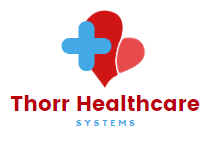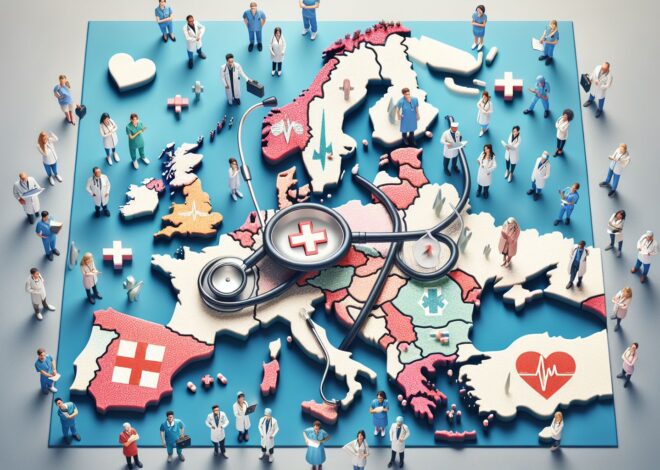
European Health Systems: Preparedness and Response in the Face of Challenges
The outbreak of the COVID-19 pandemic has placed an enormous strain on health systems worldwide, including those in Europe. As the virus spread rapidly, posing a significant threat to public health, European health systems were put to the test. This blog post aims to explore the preparedness and response of European health systems in addressing the challenges presented by the pandemic. It is intended for health professionals, policymakers, and concerned citizens who are seeking factual and insightful information on this critical topic.
Introduction: The Importance of Preparedness
Preparedness is a crucial aspect of any health system in dealing with a crisis of this magnitude. In the case of the European health systems, several countries have shown commendable preparedness, while others faced significant challenges. The key to understanding these differences lies in the readiness of health systems to respond swiftly, efficiently, and effectively.
The Strengths and Weaknesses of European Health Systems
-
Healthcare Infrastructure: European health systems benefit from robust healthcare infrastructure, with well-equipped hospitals, advanced medical technology, and highly skilled healthcare professionals. These capabilities have undoubtedly contributed to their overall response.
-
Healthcare Workforce: The availability of a well-trained and dedicated healthcare workforce has played a pivotal role in the response of European health systems. Health professionals, including doctors, nurses, and other frontline workers, have demonstrated resilience, bravery, and unwavering commitment to delivering quality care to patients.
-
Emergency Response Mechanisms: Many European countries have established effective emergency response mechanisms. These systems provide a coordinated approach to managing health emergencies, allowing for seamless communication and collaboration between different stakeholders involved in the response.
-
Investment in Research and Development: European health systems, backed by substantial investments in research and development, have led the way in scientific advancements and innovation. This has enabled them to respond rapidly to the evolving understanding of the virus, diagnostic testing, and treatment strategies.
However, despite these strengths, European health systems also faced various weaknesses, which were exposed during the pandemic:
-
Regional Disparities: Disparities in the preparedness and response of health systems across European regions have been notable. While some regions had the necessary resources and infrastructure to cope with the crisis, others struggled to provide adequate healthcare services, testing, and treatments.
-
Insufficient Funding: Financial constraints have affected the overall preparedness and response of European health systems. Insufficient funding has limited the capacity to invest in necessary infrastructure, healthcare workforce, and emergency response mechanisms, leaving some countries ill-prepared for the crisis.
The Response of European Health Systems
The response of European health systems to the COVID-19 pandemic has been multifaceted, with countries implementing various strategies tailored to their specific contexts. Some key response measures include:
-
Testing and Contact Tracing: European health systems have put significant efforts into expanding testing capacity and implementing effective contact tracing programs. Rapid and widespread testing, coupled with efficient contact tracing, has proven instrumental in identifying cases, implementing quarantine measures, and preventing further spread.
-
Healthcare Capacity Expansion: Many European countries mobilized resources to rapidly expand healthcare capacity. This included setting up temporary hospitals, converting non-healthcare facilities into treatment centers, and increasing the availability of critical care beds, ventilators, and personal protective equipment (PPE).
-
Public Health Measures: European health systems promoted public health measures such as social distancing, mask-wearing, and hand hygiene to limit the spread of the virus. Public health campaigns and clear communication were key to ensuring compliance and managing the crisis effectively.
-
Collaboration and Knowledge Sharing: Throughout the pandemic, European health systems have demonstrated a high degree of collaboration and knowledge sharing. Countries exchanged best practices, research findings, and data, enabling a collective effort to combat the virus.
Conclusion: Lessons Learned and the Way Forward
The COVID-19 pandemic has exposed both the strengths and weaknesses of European health systems. While many countries have showcased preparedness and implemented effective response strategies, others have struggled due to regional disparities and financial constraints. However, there are important lessons to be learned from this crisis.
European health systems must invest in robust infrastructure, healthcare workforce, and emergency response mechanisms. Adequate and sustained funding is essential to ensure preparedness for future health emergencies. Furthermore, promoting collaboration, knowledge sharing, and innovation will strengthen the resilience of health systems in Europe and enable a unified response to future challenges.
In conclusion, European health systems have showcased their ability to respond to unprecedented challenges during the COVID-19 pandemic. By building on their strengths, addressing weaknesses, and implementing lessons learned, these health systems can better prepare for future crises, safeguarding the health and well-being of citizens across the continent.



